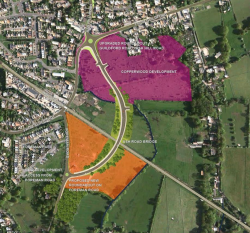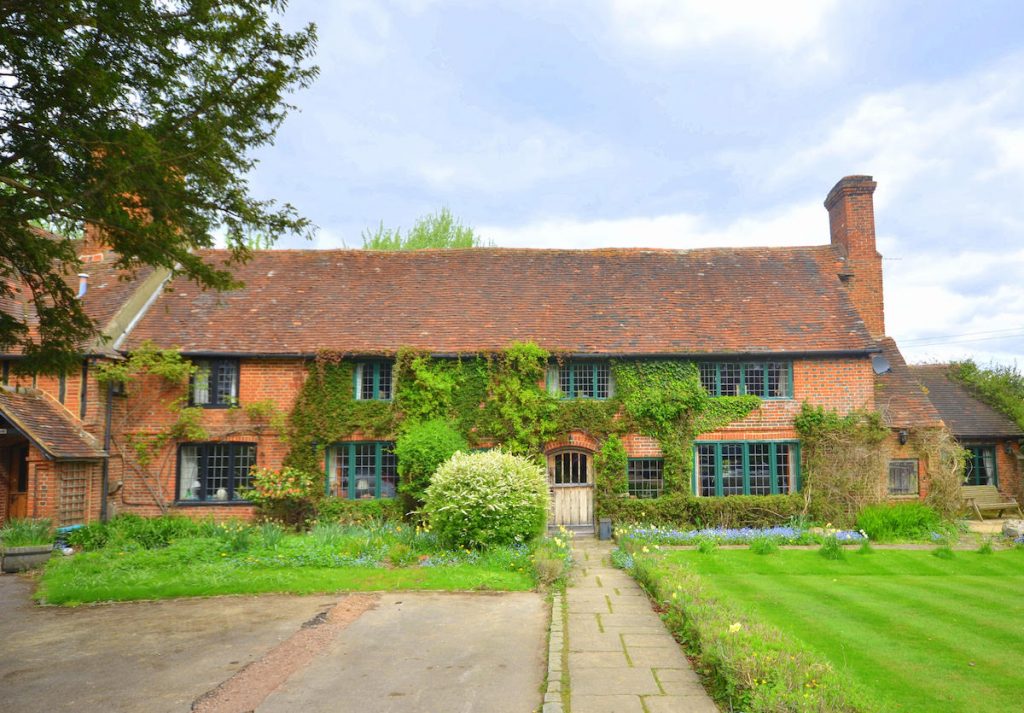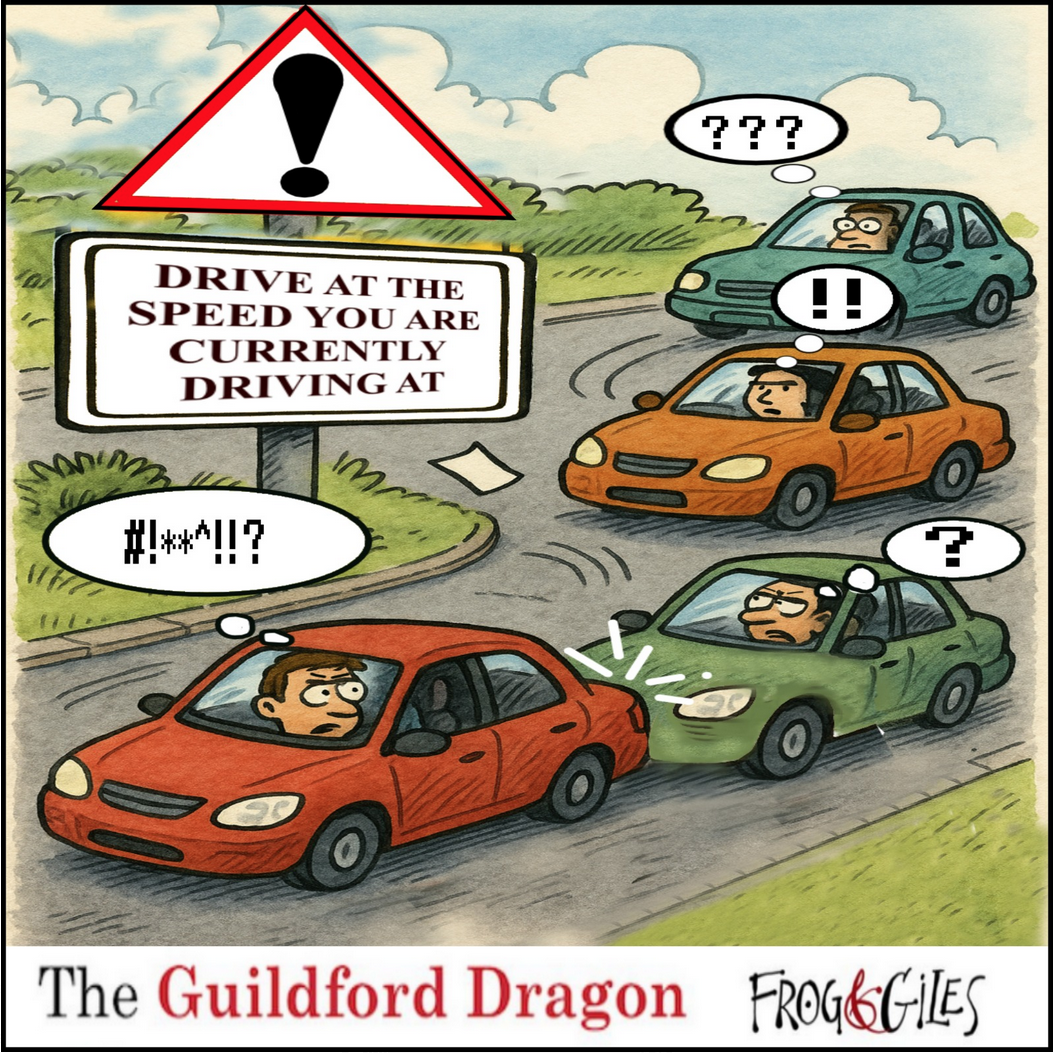 Abraham Lincoln
If given the truth, the people can be depended upon to meet any national crisis...
Abraham Lincoln
If given the truth, the people can be depended upon to meet any national crisis...
 Guildford news...
for Guildford people, brought to you by Guildford reporters - Guildford's own news service
Guildford news...
for Guildford people, brought to you by Guildford reporters - Guildford's own news service
Letter: New Railway Bridge Would Damage the Setting of Historic Buildings
Published on: 28 Jun, 2019
Updated on: 28 Jun, 2019

The proposed route of the new Ash flyover or bridge. Image courtesy GBC.
From David Weller
In response to: Ash Residents Express Doubts and Fears Over New Rail Bridge Plan
As an occupant of one of the oldest inhabited houses in England, namely Ash Manor/Old Manor Cottage, I have grave concerns about the impact of the proposed railway bridge.
Ash Manor and Old Manor Cottage are Grade II* listed buildings, this puts them in the top 6% in the country. Associated buildings are Grade II listed. The bridge would be detrimental not only to the setting of this historical group of buildings but also will cause increased light and noise pollution and lower air quality.
Our ancient house was listed in the Doomsday Book, inhabited by the Saxon Lord Azor, later by eight Kings of England: Edward ll who constructed the Moat, Edward III, Richard II, Henry IV, Henry V, Henry VI, later Henry VIII and Edward VI, who traded it with St Mary’s College Winchester for hunting grounds near Hampton Court.
Additionally, there being no remains whatsoever found of Henley Manor, there is a strong belief that Henley and Ash Manor are one and the same building, but this is unsubstantiated.

Ash Manor House
In the Gatehouse Gazetteer Ash Manor is Listed as a “Palace” and a “ Fortified Manor House” with earthwork remains.
Ash Manor after the royal ownership was inhabited by several well known and famous people. William Spode, grandson of Josiah Spode of Spode Potteries, Maurice Kelly, of Kelly’s Directories, who committed suicide at the house after his bankruptcy. Later, in the 20th century, it was the home of Major and Mrs Boon. He became the organiser of the Grand National, and Mrs Boon a well known international show jumper.
During his residency, Maurice Kelly identified and exorcised the resident ghost. The ghost was said to be Lord Henley, bastard son of Henry Vlll. Henley was imprisoned in the house after objecting to his father’s dissolution of the monasteries. An American medium, Mrs Garret, identified Lord Henley and claimed to have convinced him that he was, in fact, dead, allowing him to depart the house and look for his son who was killed in the French wars and his wife who was pinched by Lord Buckingham.
The Manor House sits on 15 inches of flint foundations over 300 feet of clay, normally extremely unstable, but due to ground water, the clay has remained stable over the centuries as has the house and its associated moat and ponds, which, incidentally, through the driest of summers never dry up.
The proposed bridge would come within 200 yards of this highly graded and designated heritage asset. Foundations of the bridge and of proposed housing within the given proximity could alter the water table threatening the very existence and stability of not only these heritage buildings but also of neighbouring properties.
The very council who adopted the Local Plan are now proposing to deviate from it. The National Planning Policy Framework and the Local Plan both state that the views to and from the Manor House must be protected. The claimed public good that would be provided by the bridge is dubious and there are many public dangers which should be weighed against it.
There were seven possible routes for the bridge identified but the proposed route is the second most damaging to the heritage asset. No regard has been shown to respect this valuable historic building, which is irreplaceable and no respect for the laws of this land which were put in place to protect our National Heritage.
See also: Grade II* Listing for Ash Manor House May Scupper Development Proposals

Click on cartoon for Dragon story: Public Asked for Views on SCC’s Proposal for Reduced Speed Limits


Recent Articles
- The Bishop’s Leap of Faith – From The Top Of The Cathedral
- Residents Urged to Have Their Say on the Changing Shape of Surrey’s Local Government
- Driver Given a Suspended Sentence After Head-on Collision With Motorcycle
- Birdwatcher’s Diary No.329
- Opinion: We Must Plan To Deal with Guildford Gridlock
- A281 Closure – Further Delay to Re-opening
- Centenary of Wood Street’s First Place of Worship, my Baptism Link with It and the Revd Deedes and his Family
- Care For Guildford Asks: Could You Be One Of Our Volunteers?
- Flashback: There Are Lessons To Learn from the Juneja Case – The Council Must Admit It
- GBC’s Plan For a Thriving Guildford ‘Is Our Promise to Residents’ Says Council Leader


Search in Site
Media Gallery
Dragon Interview: Local Artist Leaves Her Mark At One of England’s Most Historic Buildings
January 21, 2023 / No Comment / Read MoreDragon Interview: Lib Dem Planning Chair: ‘Current Policy Doesn’t Work for Local People’
January 19, 2023 / No Comment / Read MoreA3 Tunnel in Guildford ‘Necessary’ for New Homes, Says Guildford’s MP
January 10, 2023 / No Comment / Read More‘Madness’ for London Road Scheme to Go Ahead Against ‘Huge Opposition’, Says SCC Leader
January 6, 2023 / No Comment / Read MoreCouncillor’s Son Starts Campaign for More Consultation on North Street Plan
December 30, 2022 / No Comment / Read MoreCounty Council Climbs Down Over London Road Works – Further ‘Engagement’ Period Announced
December 14, 2022 / No Comment / Read MoreDragon Interview: GBC Reaction to the Government’s Expected Decision to Relax Housing Targets
December 7, 2022 / No Comment / Read MoreHow Can Our Town Centre Businesses Recover? Watch the Shop Front Debate
May 18, 2020 / No Comment / Read More






Recent Comments